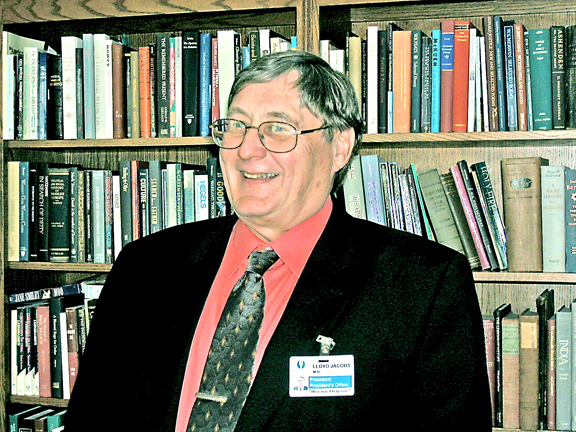
As published in the June 1, 2006 Toledo Business Journal

Lloyd Jacobs
University of Toledo, president
Fortunes of the City of Toledo and The University of Toledo linked
Toledo Business Journal recently met with Dr. Lloyd A. Jacobs, current president of Medical University of Ohio (MUO) and, effective July 1, president of The University of Toledo (UT). At that time MUO and UT will officially merge and be known as The University of Toledo; MUO will be called The University of Toledo Health Science Campus. Jacobs shared the following thoughts.
TBJ: What impact will the merger of UT and MUO have on economic development in our region?
LJ: While both The University of Toledo and Medical University of Ohio separately have had community involvement as part of our strategic plans, we believe that the larger entity will attract additional researchers, give us a greater voice in Columbus, and help us attract more research grants. We will consciously be looking for opportunities to commercialize research and other intellectual property. I think the merger will have a positive effect on regional economic development.
It would be a mistake, however, to think that this is going to happen overnight. It’s a large effort to build the intellectual capital that would allow a reinvigoration of the economy. The building of a knowledge economy is a marathon, not a sprint.
This new institution will have a tremendous amount of clout as an economic force in this community, being a large employer. The combined institution will have approximately 7,000 employees and the annual budget is $650 million, including $300 million for annual payroll.
I believe that the fortunes of The University of Toledo and the City of Toledo are inextricably linked. Both of us together have got to commit to the building of a knowledge economy. We are mutually dependent in a very fundamental way.
TBJ: Please explain the merger's impact on the ability to attract research and development funds to our area.
LJ: I think just being bigger is helpful. We will move from two $300 million enterprises to a $650 or $700 million enterprise. We will certainly gain efficiencies from the merger. And we’ve been stressing that there’s a lot of interaction, between pharmacy and medicine, for example. It’s not unlikely that we can do some development of new drugs, making some discoveries in that area. I think there’s great potential for bringing in new research dollars.
TBJ: Can you share your expectations concerning the commercialization of technology being developed at MUO and UT?
LJ: Both institutions now have a couple of spin-offs. We are deeply committed to commercializable, or what I call translational research. I think we need to be a little bit more formal about seeking those opportunities.
I’m excited that the Regional Growth Partnership has a “meet the researcher” approach for the community – and entrepreneurs particularly – to have an opportunity to meet researchers to get an idea of what they’re doing in their laboratories. I think efforts like this will move us forward in the knowledge economy.
Without having a strong university, I think that’s unlikely. Forbes Magazine recently pointed out that the only cities that are really growing rapidly are those cities that have a major university at their core.
TBJ: What are your thoughts about Savage Hall arena and the issue of a downtown arena that the university would share?
LJ: I think that the data are not all in to make the comparison between those two options. We need to get that data and make a clear apples-to-apples comparison and think of what’s best for the community.
The impact of a great university on the surrounding community is certainly important. The way that impact should be carried out is to get students here, get them engaged in this community, and get them educated so that they are a valuable asset that the community wants to retain and employ here. Whichever of those two venues – downtown or here – serves that mission the best, we will ultimately subscribe to. The fundamental reason for the existence of The University of Toledo is to make life better, longer, and healthier for people in northwest Ohio. The students and what will attract them and keep them is, I think, the deciding factor. But the data are not all in at this point.
TBJ: Do you see opportunities for the private sector to be more involved with the university?
LJ: I believe that universities have been too insular over the centuries. I think that universities must become more fully integrated into their communities. As an example, there’s no reason why there couldn’t be a PhD candidate working in the laboratory of one of the industries in the area, like Plastic Technologies or Sunoco. The more the university becomes integrated into the community, the more likely we will be successful in the knowledge economy.
We think that tighter engagement with the business community is essential. Every businessperson in this community has got to be a recruiter for UT faculty, students, and the hospital. You’ve got to be invested here; you’ve got to believe in it. The more that we’re successful in teaching young people, the greater the likelihood of them staying here and building a fabric that will create a strong, vibrant economy. If we get the young people in the front door and they stay here and become contributing citizens in northwest Ohio and Toledo, it strengthens us. That’s the most important mission of The University of Toledo.